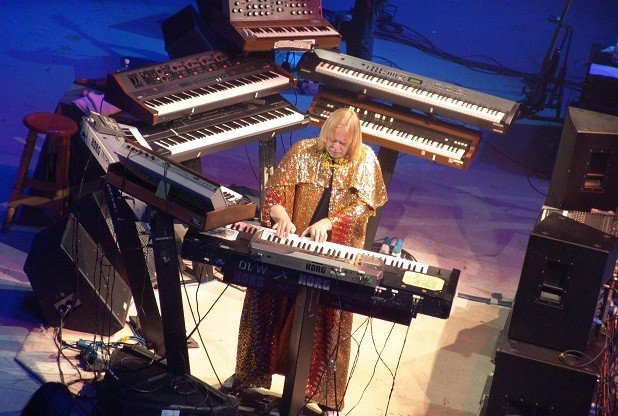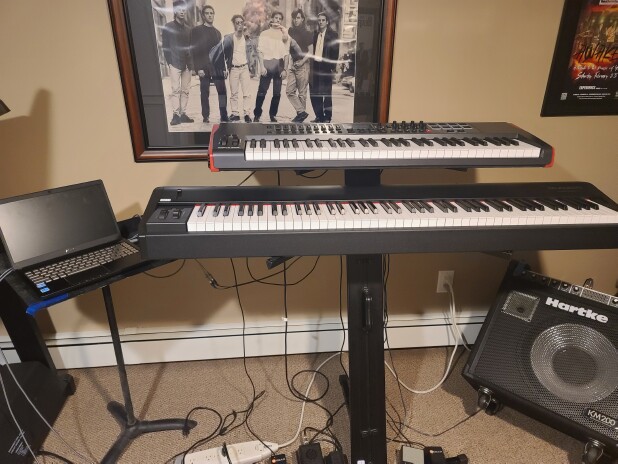Over the past 2 months I have been converting my repertoire of Yes music from the old Brainspawn Forte to GP 4. Starting from scratch, I have basically been learning about GP as I go…asking questions, and getting great support from @dhj and the entire GP Community (thanks to all who have offered their nuggets of wisdom!).
Now that I am getting close to the finish line for this massive (for me) project, I thought I would share some insight for anyone who might be interested (especially newer users).
When using Forte, I had an older, 2nd Gen i7 running at about 2.2 GHz with 16 GB RAM., and would run my entire show without a hitch. However, when building my Master GIG…it just didn’t cut it. I found it crashing a lot…especially when switching to a new song. Even with the Predictive Loading…moving between songs was a chore, and I crossed my fingers every time hoping it would work its way through. I decided an upgrade was necessary…so I went with a new, 11th Gen i7 running at 3.3 Ghz and 64 GB RAM. That made a WORLD of difference, but my Master GIG (which is currently about 75% of the band’s complete repertoire and growing) takes about 2 minutes to load, whereas the master file in Forte loaded in about 8 seconds. Why was this?
Because GP and Forte are designed so differently, I realized that the reason was likely the fact that in Forte, you essentially load every plugin once into what would be (the equivalent of) a “Global Rackspace.” From there, you select which plugins you want for each “Scene” (GP equivalent: Variation) loading whatever sounds you need. While there are “setlists” and “songs” in Forte…I never used them. Every song I programmed was just a grouping of Scenes, and I arranged them as needed.
For GP - I was told by many to treat every song as its own entity…just start from scratch by creating a new rackspace…load what you need…don’t worry about the next tune. In hindsight, I don’t necessarily agree, because as each song loads I see a new instance of plugins loading with every new rackspace. Were I to do it all over again…I likely would load the majority of my plugins in a Global Rackspace and keep them there to use in my songs, and supplement with other plugins as needed. I think this would potentially decrease the size of my GIG, and also speed up the loading time of the GIG file. At this point - my Master GIG file takes about 21 GB of memory. It’ll probably be hovering at about 32 when all is said and done. As long as its stable (it has been so far), I don’t really care. But it seems that I could have decreased the use of those resources considerably had I took advantage of the Global Rackspace, loaded the majority of my plugins in there, and bypassed whatever I wasn’t using at any given time.
I also had a revelation with the Audio Interface. I know that there are really cheap ones, and there are really expensive ones. For me, I was using a really OLD one. Again, for Forte…being an older application, the Tascam US144 Mk II worked flawlessly. But the drivers were old (10 years!), it wasn’t supported any longer, and it was NOT playing nice with the latest version of Win10. I realized this when, even with the new laptop, I was experiencing MIDI lock, and frequent audio dropouts. The last straw was when I discovered that using the native Windows audio drivers resulted in LESS CPU usage than the Tascam interface! Ergo, another upgrade (sigh). I finally choose the SSL2+ by Solid State Logic. Since then, there has been zero MIDI lock or audio dropouts, latency is non-existent (to me) and on average I would estimate a decrease in CPU usage of about 20% versus the Windows drivers running at 44.1/128.
Where I found GP really shines is the Rear Panel. The GUI is clean and the ability to use and manipulate FX plugins absolutely blows away Forte. The use of widgets on the Front Panel is really icing on the cake more than anything else. Extremely useful. It’s one of those things where you don’t really need them until you start to use them…then you can’t live without them! The customization makes live performance so much…I won’t say “easier,” but I will say “more convenient.” The initial programming of rackapaces that result in variations, that result in songs, that result in setlists is more time consuming in GP than what I experienced with Forte…but to use an old programming term: Garbage In = Garbage Out. It is ultimately worth it, because the time invested translates to more flexibility and control when you need it.
Finally, the Rig Manager is probably the ultimate blessing. It really sucked programming new stuff from scratch in Forte, because experimenting on the performance rig, with the performance laptop was cumbersome and tiring. Now, I can sit like a gentleman with 2 (different) controllers at my workstation desk and computer, fiddle and tweak until my heart’s content, and then simply export the new song, and import it to the performance rig. That, in and of itself, is worth the price of admission to GP for me.
There is so much more I have discovered, but this is my essential thoughts based on the conversion experience. I plan on making a detailed video at some point after the holidays. Until then, I wish you all a Merry Christmas and I look forward to further growth with GP!
Best Regards,
Joe


